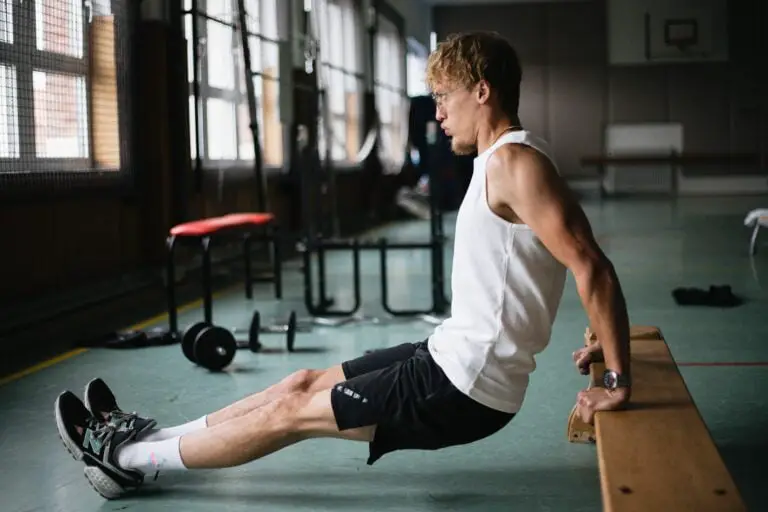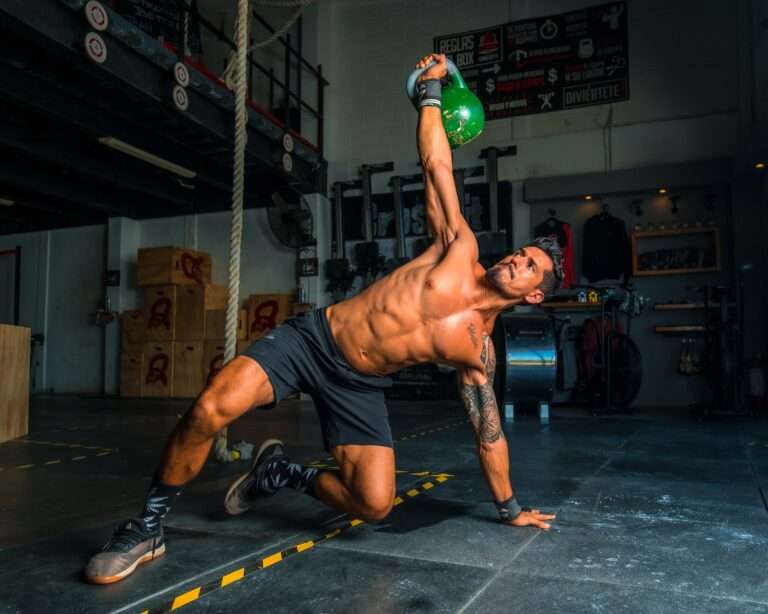15 Best Calisthenics Back Workouts Routine
The back is one of the most important muscle groups in your upper body. You can train back muscles with various calisthenics back exercises with little or no equipment require.
You can train your back with many exercises which target the back muscles. There are many bodyweight compound exercises where you don’t need any equipment to do the workout.
The back muscles support your spine, protect your nervous system, and enable you to perform various movements such as pulling, lifting, twisting, and bending.
A strong and healthy back can also prevent or relieve common problems such as back pain, neck pain, and poor posture.
In this comprehensive guide, we’ll take you through a complete calisthenics back workout routine that targets various back muscles, helping you develop a strong and defined back. Whether you’re a calisthenics enthusiast or a beginner, this routine will provide you with the tools to build a powerful back that supports your fitness journey.

Understanding the Back Muscles
The back is made up of multiple muscle groups that work together to stabilize the spine, protect the nervous system, and allow for varied movements.
Calisthenics back workout primarily engages the back muscles through pulling movements, such as pull-ups, rows, and back extensions. These exercises help strengthen the back muscles while also involving other stabilizing muscles.
A well-defined and strong back is a sign of a well-built physique, and calisthenics exercises provide a diverse and effective way to achieve it.
Here are some of the most essential back muscles that are targeted during exercise including the:
Latissimus Dorsi (Lats)
The upper body’s primary muscles range from the shoulders to the lower back.
They help to extend and rotate the arms and shoulders.
Responsible for most pulling movements.
Rhomboids:
The rhomboids are located in the mid-upper back and connect the shoulder blades to the spine.
They help retract the shoulders and stabilize the scapula.
Trapezius or Traps
Traps are shaped like a V and span from the neck to the lower back.
They help raise the arms, shrug the shoulders, and stand up straight.
Responsible for stabilizing and moving the shoulder blades.
Erector Spinae:
The erector spine is a group of muscles that help maintain posture, flex and lengthen the spine, and rotate the trunk.
Equipment Need
Equipment can enhance your calisthenics back workout. Many effective exercises can be done with just your body weight and minimal equipment.
You typically don’t need much equipment, if any. Here’s a list of equipment you might find useful for a calisthenics back workout:
- Pullup Bar
- Resistance Bands
- Gymnastic Rings
- Weighted Vest
Calisthenics Back Exercises
With little or no equipment, you may perform a variety of back exercises that successfully target every aspect of your back, from the erectors to the lats and rear delts!
Here we’ll go over some of our favourite calisthenic back exercises for all ability levels. From here, you may select your favourites to create a calisthenics back workout that meets your specific objectives and needs.
Here is the list of calisthenics back exercises for all difficulty levels:
Back Exercises for Beginners
This exercise is ideal for beginners especially if you are not able to do a single pull-up. You can select exercises and customise your calisthenics back workout plan.
Assisted Pull-Ups:
- Grab a pull-up bar with a shoulder-width grip.
- Place a resistance band under your feet for assistance.
- Pull yourself up until your chin clears the bar.
- Slowly lower yourself back down with control.
- Aim for 8-12 reps per set.
Bodyweight Rows:
- Find a sturdy horizontal bar or use a suspension trainer.
- Lie underneath the bar with your feet flat on the ground and arms extended.
- Pull your chest towards the bar, squeezing your shoulder blades together.
- Lower yourself back down with control.
- Perform 10-15 reps per set.
Superman Holds:
- This back exercise don’t neet any equipment.
- Lie face down on the ground with your arms extended overhead.
- Lift your chest, arms, and legs off the ground simultaneously.
- Hold this position for 10-20 seconds, focusing on squeezing your back muscles.
- Lower back down and repeat for 3-4 sets.
Inverted Rows (Low Bar):
- Set up a sturdy bar or use a table at hip height.
- Grip the bar with palms facing towards you.
- Keep your body in a straight line and pull your chest towards the bar.
- Lower yourself back down under control.
- Aim for 8-12 reps per set.
Bent-Over Reverse Snow Angels:
- Stand with your feet shoulder-width apart, knees slightly bent.
- Lean forward at the hips, keeping your back flat.
- Extend your arms out to the sides, palms facing down.
- Squeeze your shoulder blades together as you bring your arms towards your hips in a snow angel motion.
- Return to the starting position and repeat for 10-15 reps.
Back Exercises of Intermediate Level
This exercise is for experienced once if you can do some good reps of pull-ups with proper form, you can select exercises and customise your calisthenics back workout plan.
Wide-Grip Pull-Ups:
- Grab a pull-up bar with a wide overhand grip.
- Pull yourself up until your chin clears the bar.
- Lower yourself down slowly and with control.
- Aim for 6-10 reps per set.
L-Sit Pull-Ups:
- Perform a pull-up while keeping your legs extended straight out in front of you in an L-sit position.
- Focus on engaging your core and maintaining the L-sit throughout the movement.
- Aim for 6-8 reps per set.
Archer Rows:
- Set up in a bodyweight row position with a wider-than-shoulder-width grip.
- As you pull yourself up, shift your body to one side, extending your arm fully.
- Lower yourself back down, then repeat on the other side.
- Aim for 8-12 reps per side.
Back Bridge:
- Lie on your back with your knees bent and feet flat on the ground.
- Press through your heels and lift your hips towards the ceiling, creating a bridge position.
- Hold for 20-30 seconds, focusing on engaging your glutes and back muscles.
- Lower back down and repeat for 3-4 sets.
Front Lever Tuck Raises:
- Hang from a pull-up bar with an overhand grip.
- Pull your knees up towards your chest and tuck them under your body, engaging your core.
- Slowly lower your legs back down to the starting position.
- Aim for 6-8 reps per set.
Back Exercises for Advanced Level
This exercise is for advanced calisthenics athletes, you can select exercises form intermediate and beginner level to increase the intesity of your calisthenics back workout.
One-Arm Pull-Ups:
- Hang from a pull-up bar with an overhand grip.
- Engage your core and pull yourself up using only one arm.
- Lower yourself back down with control.
- Aim for 3-5 reps per arm.
Front Lever Holds:
- Hang from a pull-up bar and engage your core.
- Extend your body horizontally until it is parallel to the ground, keeping your arms straight.
- Hold this position for as long as possible, aiming for 10-20 seconds.
Clapping Pull-Ups:
- Perform a pull-up explosively, using enough power to propel yourself away from the bar.
- Clap your hands together in front of your chest while in mid-air.
- Catch yourself on the way back down and lower yourself back into the starting position.
- Aim for 4-6 reps per set.
Back Lever:
- Hang from a pull-up bar with an overhand grip.
- Engage your core and slowly raise your legs until they are parallel to the ground, keeping your body straight.
- Hold this position for as long as possible, aiming for 10-20 seconds.
Muscle-Ups:
- Start with a false grip on the bar and explosively pull yourself up, transitioning into a dip at the top.
- Lower yourself back down with control and repeat.
- Aim for 3-5 reps per set.
Tips for Progression
Progression is key to continuous improvement in your back strength. Gradually increase the intensity of your workouts to keep challenging your muscles.
How to Advance in Back Exercises
Increase Resistance:
If you’re comfortable with bodyweight exercises, consider adding weight with a weight vest or resistance bands.
Try Advanced Variations:
Once you’ve mastered the basics, explore advanced variations like archer pull-ups or one-arm rows.
Tracking Your Progress
Keep a workout journal to track the number of reps, sets, and any modifications you make. This helps you monitor progress and stay motivated.
Conclusion
A complete calisthenics back workout routine is an essential component of your fitness journey. By incorporating these exercises, you’re not only building a strong and defined back but also enhancing your overall strength and performance. Consistency, proper form, and patience are key to achieving the best results. Remember to complement your workout routine with a balanced diet and adequate rest for optimal muscle recovery. As you progress through your calisthenics back training, you’ll witness the transformation in your back strength and appearance, contributing to your overall success in the world of calisthenics.
FAQs
Can you build back with calisthenics?
Yes! Back exercises like pull-ups, chin-ups, rows, and various bodyweight rows can target different muscles in your back and help you develop strength and size.
Can calisthenics build lats?
Yes, Pull-ups and chin-ups are particularly effective for targeting the lats, along with exercises like bodyweight rows and horizontal pulling movements.
How to get a bigger back?
To get a bigger back through calisthenics or any form of training, you’ll want to focus on progressive overload. This means gradually increasing the intensity of your workouts over time. Start with bodyweight back exercises like pull-ups and rows, and as you get stronger, you can alter your calisthenics back workout plan, add variations, increase reps, or use added weight.
Do pushups work the back?
Pushups primarily target the muscles on the front of your upper body, such as the chest, shoulders, and triceps. While they don’t directly work the muscles of the back, pushups can indirectly engage the muscles in your upper back and stabilise muscles.








One Comment